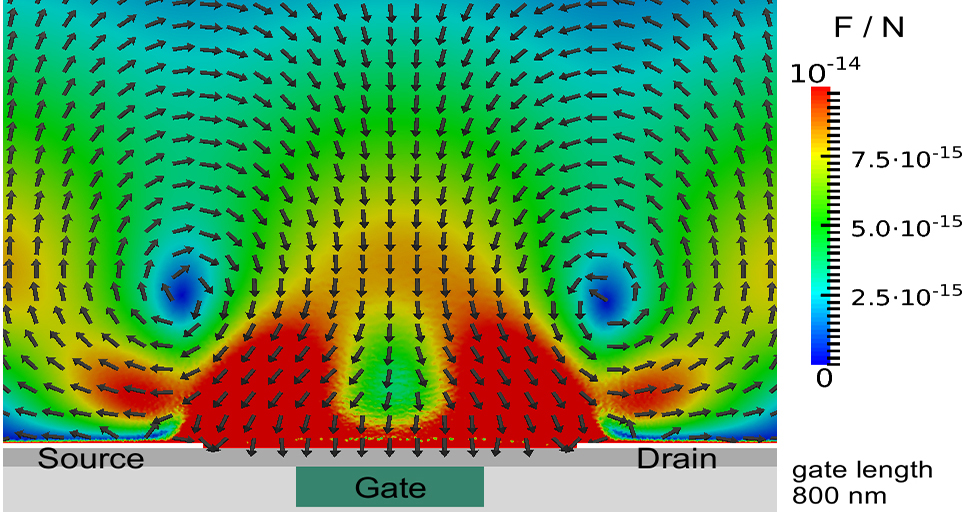Dielectric particles experience a force when subjected to a nonuniform electric field. This effect, called dielectrophoresis (DEP), is currently exploited at Fraunhofer ENAS to deposit carbon nanotubes (CNTs) as channel material for future high-frequency CNT-based field effect transistors. However, during a DEP process, the forces acting on the CNTs strongly depend on the surrounding liquid medium, the electric properties of the CNTs, their size and shape as well as the frequency of the electric field.
To optimize the CNT deposition, a simulation workflow has been developed, which describes the motion of single CNTs during the process. The model includes the relevant physical effect that contribute to total force acting on the CNTs: the direct DEP force (which depends on the type of CNT and on the electric field frequency, and the gradient of the local electric field) and the drag effect due to the motion of CNT containing fluid (which is induced by temperature gradients due to local Joule heating of the fluid). These coupled effects are modeled and simulated for realistic 2D transistor geometries using a finite element solver. A subsequent time dependent simulation including the inherent Brownian motion of the CNTs tracks their individual trajectories and enables a systematic statistical analysis of the deposition of different CNT types for various process conditions and transistor geometries.
 Fraunhofer Institute for Electronic Nano Systems
Fraunhofer Institute for Electronic Nano Systems